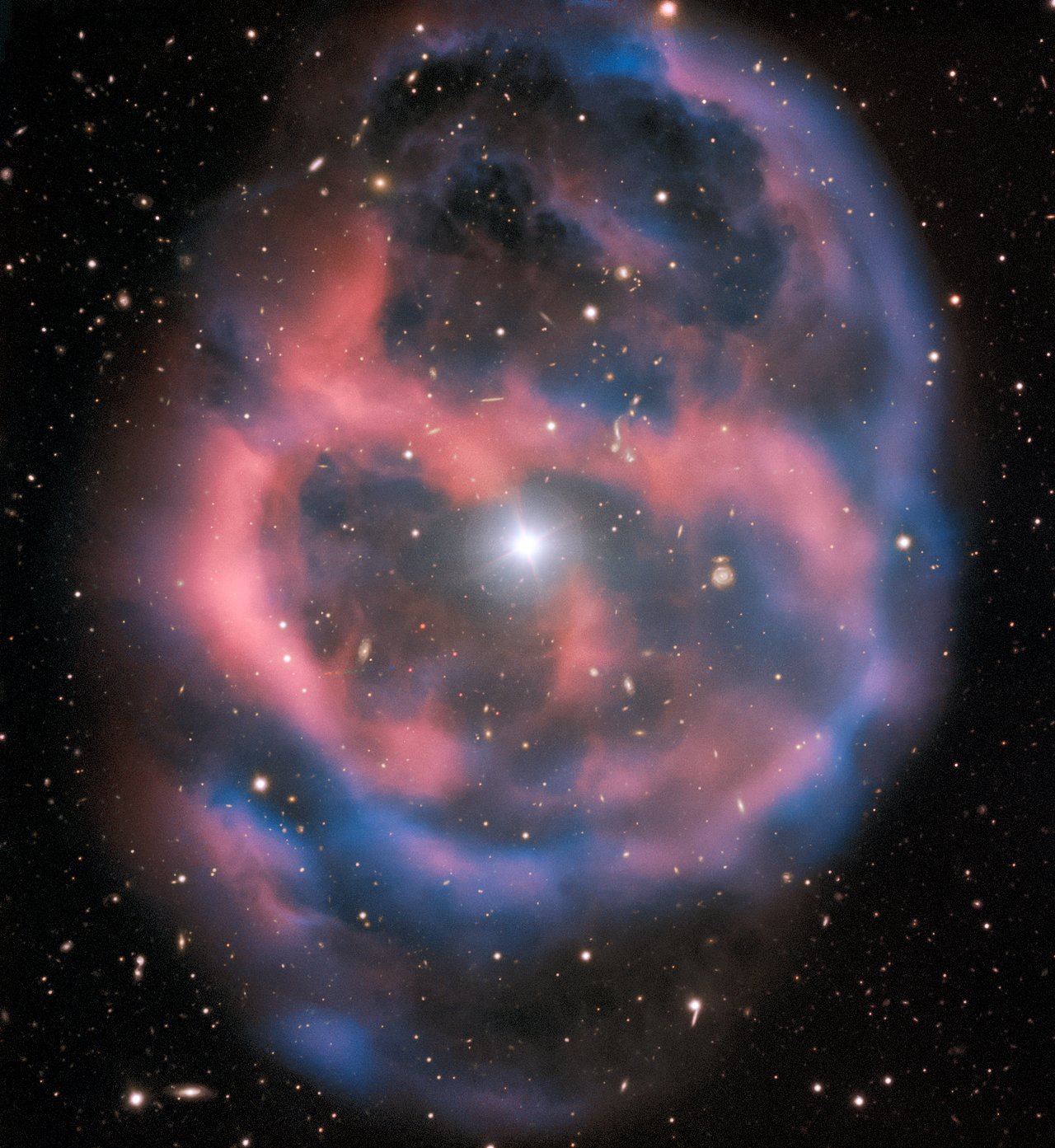A Cosmic Gem: Dying Star Shines in Stunning Telescope Views
A planetary nebula — the remains of a giant star that has tossed away its outer layers — glows in this stunning new image released by the European Southern Observatory.
There aren't any planets involved in a planetary nebula; the term dates to the 1700s, when astronomers armed with weaker telescopes could see such a structure only as a fuzzy blob. The new image is a far cry from that history, letting us peer into the detailed structure of the nebula.

Planetary nebulas are a byproduct of explosive deaths of red giant stars, which toss their gas out into space and then bombard it with radiation that makes it glow. As the structures age, their ionized gas travels outward from the remains of the red giant that spewed it, fading slowly as it does.
That means planetary nebulas last for only about 10,000 years, which is particularly short-lived for an astronomical phenomenon.
This particular nebula, which scientists refer to as PN A66 36 or ESO 577-24, was first identified in the 1950s, and scientists have been keeping an eye on it ever since. It's about 1,400 light-years away from Earth, but powerful telescopes like the Very Large Telescope in Chile can still spot it.
The image is a nice bonus from the telescope produced through a program called Cosmic Gems. The program uses time with the Very Large Telescope and other instruments at the facility that aren't booked for science — when the full moon is bright, clouds dot the skies, or the time just hasn't been claimed.
Email Meghan Bartels at mbartels@space.com or follow her @meghanbartels. Follow us @Spacedotcom and Facebook. Original article on Space.com.
Get the Space.com Newsletter
Breaking space news, the latest updates on rocket launches, skywatching events and more!
Join our Space Forums to keep talking space on the latest missions, night sky and more! And if you have a news tip, correction or comment, let us know at: community@space.com.

Meghan is a senior writer at Space.com and has more than five years' experience as a science journalist based in New York City. She joined Space.com in July 2018, with previous writing published in outlets including Newsweek and Audubon. Meghan earned an MA in science journalism from New York University and a BA in classics from Georgetown University, and in her free time she enjoys reading and visiting museums. Follow her on Twitter at @meghanbartels.









